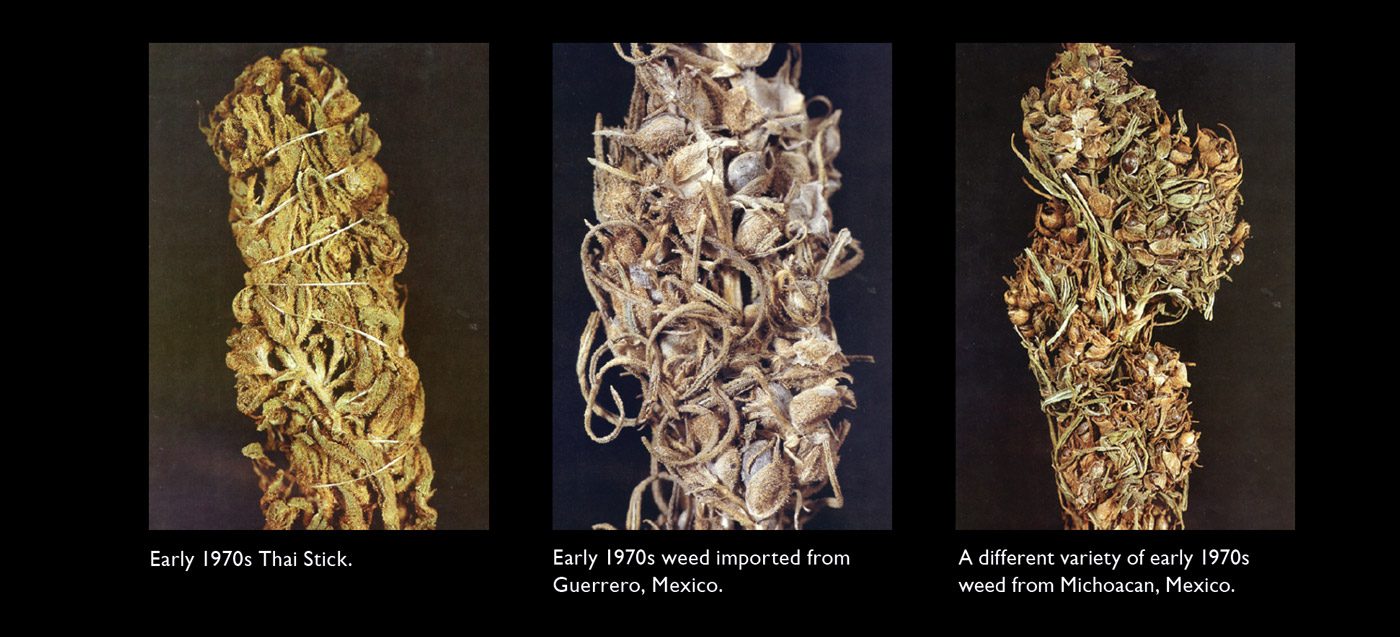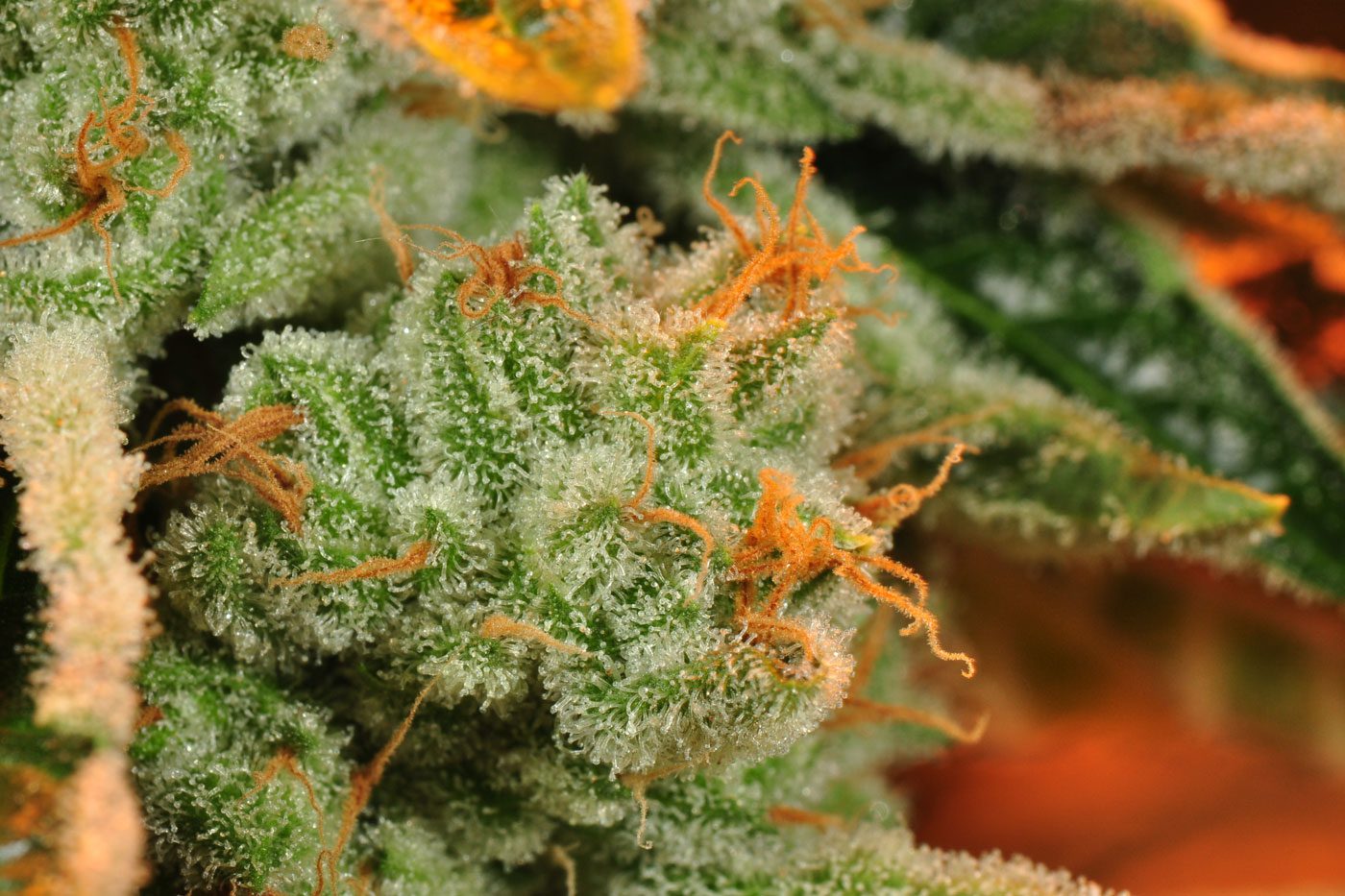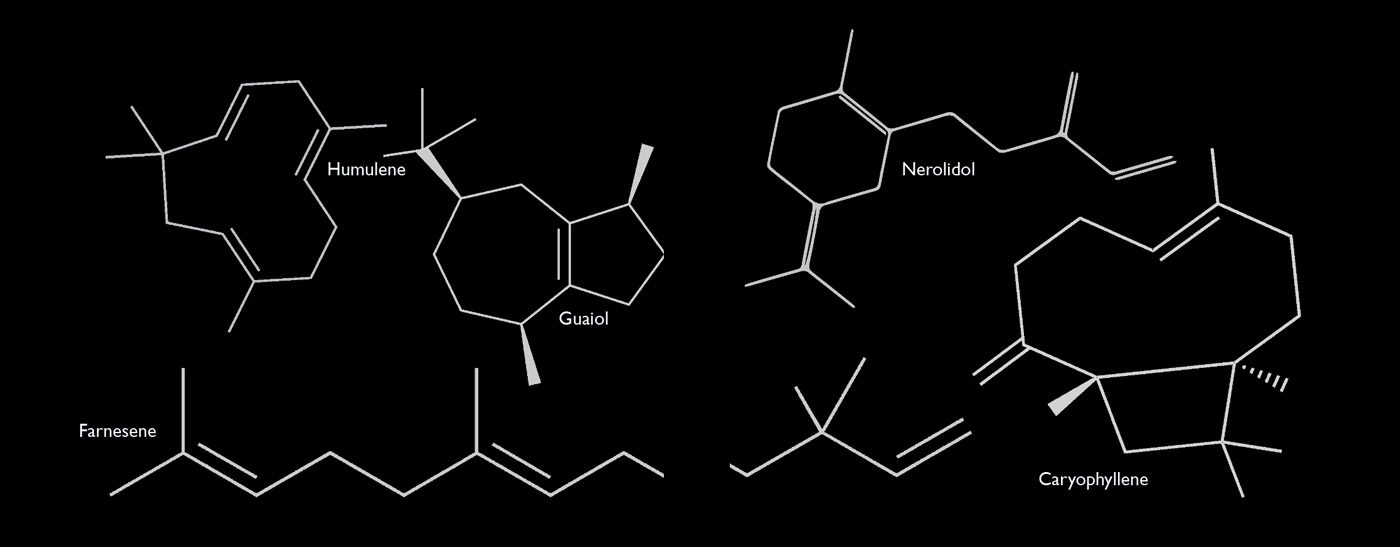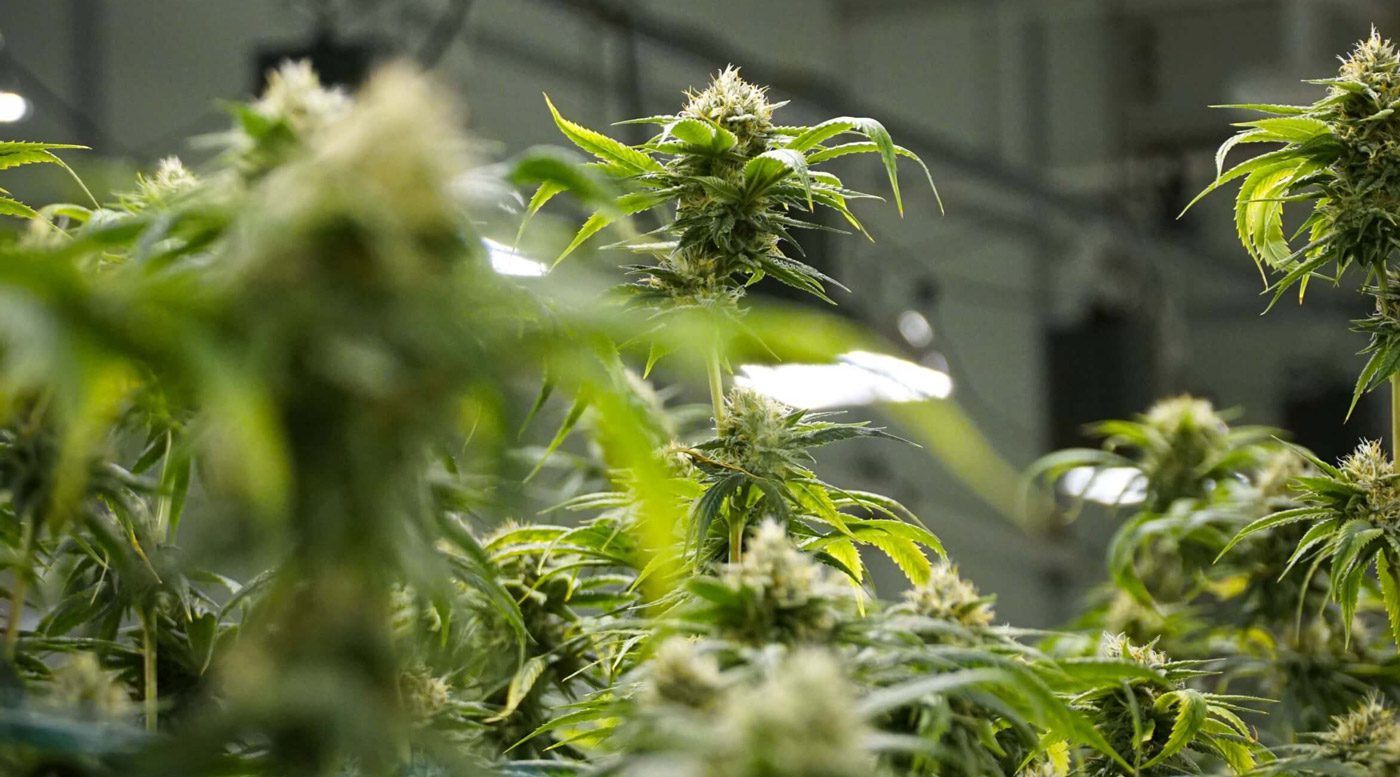In previous articles, we discussed the landrace origins of traditional marijuana and hashish, the cannabinoids they contained, and their occurrence in modern sinsemilla cultivars. The primarily psychoactive molecule in cannabis has always been THC, and some traditional cannabis also contained some CBD. Modern sinsemilla cultivars are generally higher in THC than in the ’70s, and recently developed medicinal cultivars often produce large amounts of CBD as well.
Setting cannabinoid content and potency aside, why don’t the majority of modern cannabis cultivars produce the same effects we experienced with traditional imported cannabis and why is this so? How do imported marijuana and hashish, traditional homegrown, and modern sinsemilla differ?
A notable change is that modern sinsemilla flowers, rich in cannabis terpenes, have a much stronger aroma than in the past. The diverse fragrances produced by the Cannabis plant, a result of the cannabis essential oil and the benefits of terpenes, are captivating and have become a frequent topic of conversation among cannabis consumers and often appear in the media. Each cultivar expresses a characteristic aroma that is a key element in its branding.
The compounds responsible for variations in the aromas of Cannabis plants are largely the types of terpenes contained in their essential oils. Terpenes, a significant aspect of cannabis essential oil, are highly volatile molecules that at room temperature and especially when heated vaporize, will evaporate and escape from the flowers and their products. We will discuss terpenes and the benefits of terpenes at length, but first let’s have a short look at old-school cannabis.
TRADITIONAL IMPORTS
Seedless cannabis from Colombia, Mexico, Thailand, and Africa was occasionally available in the early ’70s, but until domestic sinsemilla production began in the late ’70s and burgeoned in the ’80s, the vast majority of cannabis flowers were simply seedy weeds. Being fully seeded did not affect their THC and CBD levels nearly as much as it did their aromas and flavors, which are significantly influenced by terpenes in cannabis. And, lucky for us, some of those troublesome seeds sprouted to grow the sinsemilla revolution, enhancing the benefits of terpenes.
Natural cannabis populations consist of approximately half pollen-producing male plants and half seed-producing female plants. Although male plants are valuable as fiber producers, female plants are the focus of cannabis commerce in both hemp seed and drugs. In the absence of male plants and pollen, female plants remain unfertilized and therefore do not produce seeds.
This is why all sinsemilla crops are seedless. Fertilized female plants devote much of their energy to producing seeds vital to the continuation of the population and have less resources remaining to produce essential oil, including cannabis essential oil. Sinsemilla females devote the majority of their reproductive energy to producing more essential oil, and the levels of both cannabinoids and terpenoids increase, thereby amplifying the benefits of terpenes. Modern sinsemilla cultivation relies on this basic concept.
By the time imported marijuana and hashish reached North America and Europe, they had traveled lengthy roads from their countries of origin. After harvest and processing, they were stored in the bush or in warehouses, often for extended periods prior to shipment. Whether sent on boats or planes, concealed in vehicles, or through the post, all of these environments were unrefrigerated and often quite warm. Traditional imported hashish was even less aromatic, resulting from additional processing as well as lengthy transport, diminishing the presence and effect of terpenes in cannabis.
TERPENES
The diverse aromas of many plants result largely from their terpenes, including the complex profiles of terpenes in cannabis. Terpenes form a class of organic hydrocarbons, and many are named based on the plants in which they were discovered. Terpenes constitute the largest category of plant chemicals and more than 20,000 have been identified.
Terpenes provide plants with a defensive system that inhibits fungal and bacterial growth, dissuades pests and deters their feeding, and terpenes are commonly included in insect repellents. The benefits of terpenes extend beyond their aromatic qualities, playing a crucial role in the therapeutic properties of cannabis essential oil.
Most terpenes are classified as either monoterpenes formed of 10 carbon atoms, or sesquiterpenes formed of 15 carbon atoms. Isolated monoterpenes and most sesquiterpenes are generally clear and colorless to light yellow, thin, and often oily liquids, while sesquiterpenes can also be more viscous liquids or waxy and soft crystalline solids. Monoterpenes are generally very fragrant, and highly volatile and flammable, while sesquiterpenes tend to be less fragrant, volatile, and flammable.
Many monoterpenes and some sesquiterpenes evaporate at room temperature and oxidize when exposed to light and air, condensing into a sticky resin. Because terpenes are hydrocarbons, they are readily soluble in organic solvents and fats. Some are also somewhat soluble in water, which accounts for the characteristic cannabis odor of wastewater from water hashish collection. The term “terpene” refers to the basic molecule, and “terpenoids” are naturally modified versions of those terpenes.
Unlike the cannabinoids THC and CBD produced only by cannabis plants, terpene compounds are found in almost all plants and are prevalent components of the essential oils of fruits, vegetables, herbs, and spices. Essential oils, including cannabis essential oil, can be extracted by simple techniques such as steam distillation. Complex essential oils as well as isolated terpenes are common ingredients in the aroma and flavor agents of foods and beverages and are therefore frequently included in our diets.
Aromatic terpenes are produced in abundance by cannabis plants. The characteristic aroma of Cannabis as a whole is produced by more than 150 types of terpenes, many of which have unique aromas and flavors, and some are yet to be named. A single cannabis inflorescence (or “bud”) may contain 60 to 80 different terpenes, highlighting the significant benefits of terpenes.
The terpene fraction in cannabis is relatively small (less than 5% dry weight) and still falls well below the cannabinoid levels (up to 30% dry weight) even in sinsemilla cultivars. Each cultivar produces its most characteristic terpenes in relatively larger quantities, but many other terpenes occur only in trace amounts, adding subtle nuances to aromas and flavors.
THE SESQUITERPENES
In this article, we will focus on the less volatile and therefore more persistent sesquiterpenes commonly found in traditional imported marijuana and hashish. The majority were present in early marijuana imports, but others arrived later in seeds from Afghanistan. Included here are descriptors of aroma and taste associated with each terpene and its occurrence in sinsemilla cultivars.
Other plants in which each terpene is found are also listed. You may recognize several as characteristic aroma and flavor elements of common herbs, flowers, and fruits, showcasing the diverse types of terpenes in cannabis.
Caryophyllene is ubiquitous in the majority of cannabis both traditional and modern. Caryophyllene has a spicy, sweet, peppery, and woody aroma of dry cloves; and a peppery, spicy flavor with camphor and astringent citrus undertones. Caryophyllene is a major constituent of sweet basil, calamus, rosemary, and hop essential oils, and accounts for the spiciness of black pepper and clove oil, the spicy taste of cannabis essential oil, and the “hoppy” aroma and flavor of beer.
It is present in catnip and is added to tobacco to enhance its flavor. According to laboratory analyses, significant levels of caryophyllene are found at up to 35% of the total terpene content. The seminal sinsemilla cultivars S.A.G.E., Zeta, Hash Plant, Sour Diesel, Chemdog, Bubba Kush, OG Kush, and Skunk No. 1 (as well as the more recent cultivars like Girl Scout Cookies, Cookies and Cream, Candyland, Death Star, and Original Glue, and the high-CBD cultivar Cannatonic) are rich in caryophyllene.
This highlights the benefits of terpenes in enhancing the flavor and therapeutic qualities of cannabis.
Some researchers consider caryophyllene to be a “dietary cannabinoid” because it binds directly to peripheral CB2 receptors in the body. It does not bind to the CB1 receptor and causes no psychoactive effects, therefore it is allowed as an additive in foods and beverages. However, caryophyllene may alter the effects of cannabinoids that bind to CB2 receptors, which opens the possibility that other terpenes in cannabis may also bind to CB1 and/or CB2 receptors, and could cause synergistic effects in concert with the primary cannabinoids.
The farnesenes are volatile sesquiterpenes that evaporate into a sticky brown resin. Alpha-farnesene has a woody, green vegetative aroma with flowery, herbal, citrus, lavender, bergamot, myrrh, neroli, gin, and apple nuances, with a fresh green vegetative flavor of celery and hay with somewhat fatty tropical fruit after notes. Alpha-farnesene is found in ginger root, jasmine, and ylang-ylang oils. Alpha-farnesene is less common than beta-farnesene and only trace amounts have been reported in fresh Skunk No. 1.
Beta-farnesene has a green, woody, and vegetative aroma with hints of lavender and citrus that has been compared to magnolia flowers, with an herbal flavor with organic woody notes. It appears in apple, basil, cinnamon, citrus, geranium, ginger, lavender, nutmeg, pear, and hop essential oils. Its contribution to beer brewing is significant for its aromatic qualities.
Beta-farnesene is an alarm pheromone in a common cannabis pest: the green peach aphid. Dutch cultivars containing small amounts of beta-farnesene include Skunk No. 1, S.A.G.E., and White Rhino, as well as more recently appearing Eagle Scout, Boy Scout Cookie, and Tangerine Kush.
Nerolidol is a sesquiterpenoid alcohol with a mild, delicate, sweet, floral aroma and hints of citrus-like green apple and rose with woody and waxy nuances. It expresses a woody, green, floral flavor with hints of citrus and melon. Nerolidol is a constituent in citronella, citrus, ginger, guava, jasmine, lavender, lemongrass, orange blossom, thyme, and tea tree oils.
Nerolidol is found in several foundation cultivars such as Jack Herer, Sour Diesel, Bubba Kush, Chemdog, and Blue Dream. It’s also present in more recent additions like Skywalker OG, Girl Scout Cookies, Royal Cookies, Royal Jack Automatic, Island Sweet Skunk, Sour Kush, Sojourn, Tangilope, Dieseline, and Good Morning. Research indicates that nerolidol may facilitate the absorption of cannabinoids and terpenes into the bloodstream, further illustrating the benefits of terpenes in cannabis cultivation and consumption.
 TRACKING TERPENES
TRACKING TERPENES
Tracing The Geographic Origins of Cannabis Terpenes is more about what we don’t know than what we know. Early forensic analyses of drug seizures were focused on cannabinoid content, overlooking the terpenes in cannabis and cannabis essential oil, and there are many gaps. Were those terpenes absent, or were they simply of little interest and unreported?
Our level of confidence is highest with more recent analyses of a plethora of modern cultivars presenting more complete terpene data, highlighting the benefits of terpenes, and we now know that many terpenes were missing in early reports. The majority of terpenes can be found in modern sinsemilla cultivars and cannabis products. Many have been with us since seeded marijuana came to our shores in the 1970s.
Yet others came later and can be traced back to their Afghan roots. The bottom line is that all the major terpenes and many more are to be found in modern sinsemilla cultivars. Science marches on!
As we have seen, sesquiterpenes are key elements in the characteristic aromas of a wide variety of sinsemilla cultivars, demonstrating the benefits of terpenes. Long before the advent of domestic sinsemilla production, the genes controlling terpene synthesis were present in the seeds found in imported marijuana. Landraces from foreign origins laid the foundations upon which early Dutch and North American sinsemilla cultivars were built.
Sesquiterpenes, significant components of cannabis essential oil, were the predominant fragrance and flavor elements in traditional marijuana and their presence in modern sinsemilla builds a foundation while adding complexities that make them ever pleasurable, illustrating the types of terpenes.





 TRACKING TERPENES
TRACKING TERPENES